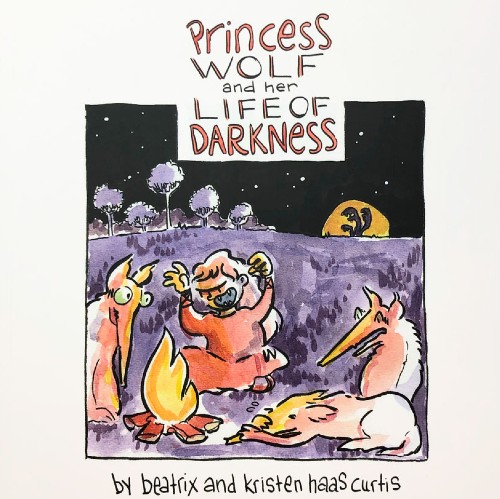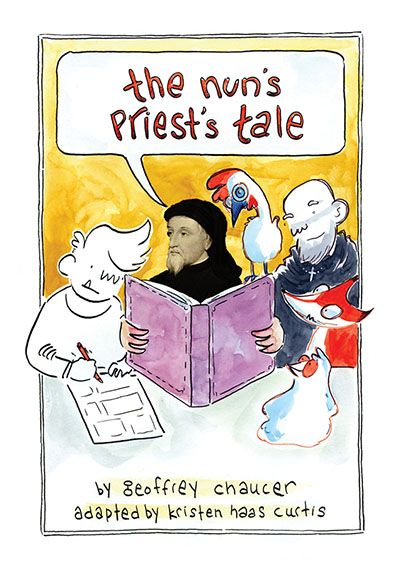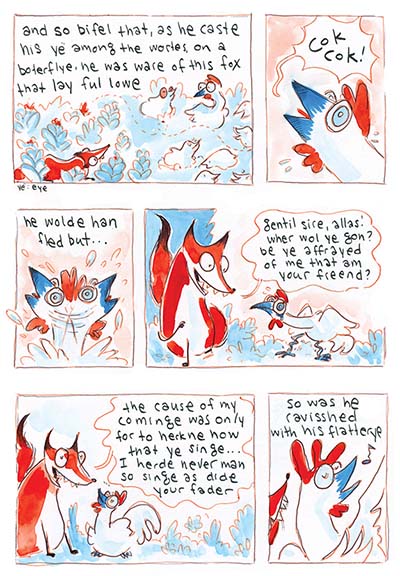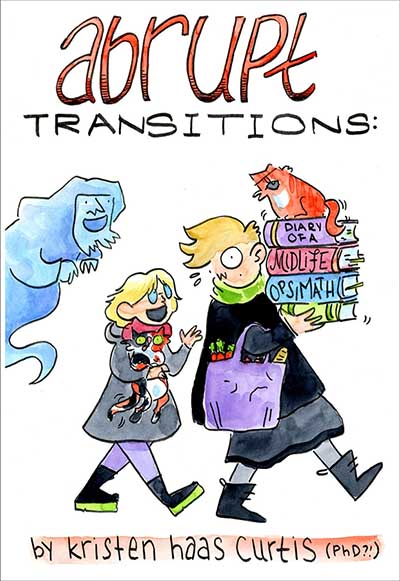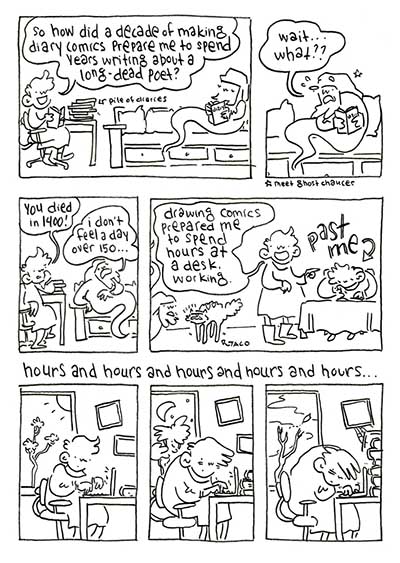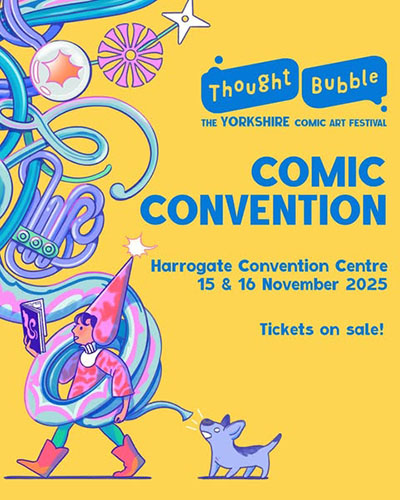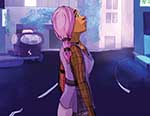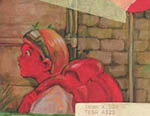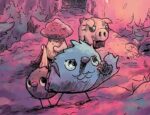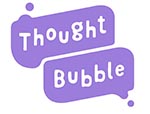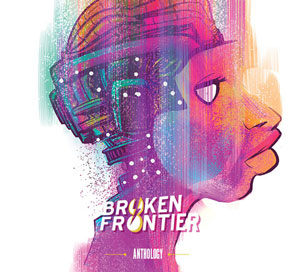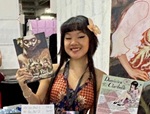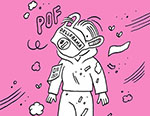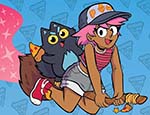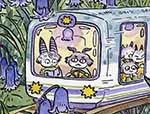THOUGHT BUBBLE MONTH 2025! From diary comics to Chaucer adaptations Kristen Haas Curtis’s work can never be said to be predictable. Kristen will be moderating the ‘Out of Olde Bokes: Adapting Comics from Medieval Sources’ at Thought Bubble this year and, with our Thought Bubble coverage this year trying to put an extra emphasis on events and programming, this seemed the perfect moment to finally talk to her at BF about her practice. We chat below about unusual comics collaborations, bringing Middle English to new audiences, and what to expect from that panel in Harrogate…
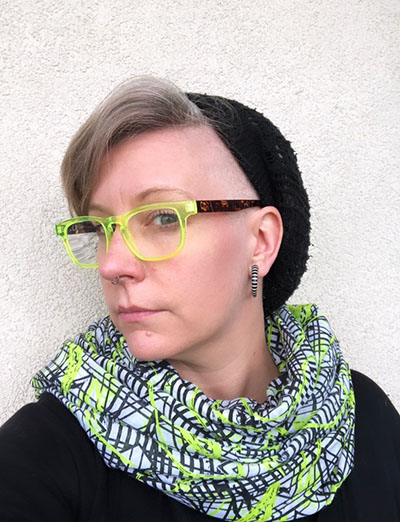
ANDY OLIVER: Let’s begin with asking you to introduce yourself to the Broken Frontier and Thought Bubble audiences with a short overview of your work both inside and outside of comics, not just as a cartoonist but also as a medievalist and scholar?
KRISTEN HAAS CURTIS: Greetings, all! I’m an American cartoonist living in Switzerland (for over 17 years now) and a medievalist, specializing in the works of Geoffrey Chaucer (famed for The Canterbury Tales, which you likely loved or hated in school) and in adaptations of his work in both the eighteenth century (looking at you, Alexander Pope and John Gay) and today (and you, Zadie Smith and Seymour Chwast). As a reader, I’ve been obsessed with retellings for as long as I can remember, and one part of my scholarship includes creating adaptations of my own, reworking Chaucer’s texts in comics form and in creative writing. I also work in autobiography: I have been keeping a comics diary since 2013 and have drawn hundreds of pages over the years.
AO: One of my favourite things to come from your direction comics-wise over the years was the adorable Princess Wolf and Her Life of Darkness, a collaboration between yourself and your daughter Beatrix. Can you tell us a little about the playful premise of that one-shot?
KHC: Princess Wolf remains one of my favourite projects I have ever completed and it’s probably the one I continue to think about most often. When she was little, my daughter Beatrix (now a teenager) would occasionally tell me snippets of the story of Princess Wolf. This continued off and on for a couple years before I finally started taking notes. Intrigued by the increasingly bizarre world my daughter was inventing (briefly, Princess Wolf lives in a castle with her thousand wolf friends who are transformed suitors that she did not want to marry but still wanted to hang out with; also there are living statues and a brief declaration of war on the sun), I decided for the “100 Day Challenge” to draw the story of Princess Wolf day-by-day, after Bee went to bed in the evenings.
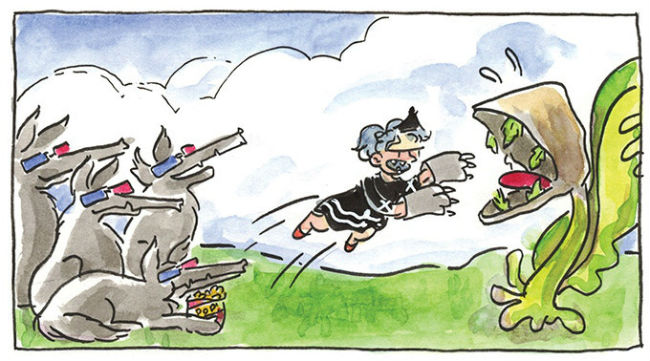
Each morning when she woke up, she would rush to my sketchbook and offer her (often very pointed) critique on the previous night’s work, which I would then incorporate as a second level of the story. So Princess Wolf and Her Life of Darkness is the story of the heroine/villain of the title but it’s also the story of what it’s like to collaborate on a creative project with an opinionated child. It’s strange and funny and I wish I could have convinced her to co-author additional volumes, but she moved on to other interests. She’s a phenomenal artist in her own right these days and designed a three-eyed cat pin badge for me to bring to TB!
AO: As part of your studies of Chaucer you reimagined his The Nun’s Priest’s Tale as a comic. What were the challenges of adapting that work into sequential art? How did you approach that narrative transition?
KHC: The project brought a number of interesting challenges with it: some personal (severe time constraints), some global (it was spring 2020…), and some related to the text itself. Two research questions animated the creation of my adaptation: I wanted to remedy a pattern in recent adaptations of simplifying or omitting the most “Chaucerian” elements of the original text and I also wanted to address the difficulty of reading Middle English for a non-specialist audience.
The second is the more interesting here, I think. Years ago, as a student just starting out with medieval texts, I noticed I had a hard time getting immersed in the story because I was always ping-ponging across the page between the medieval poetry on the left and the glossings and explanations on the right. I really wanted to be swept away by these stories, but instead I kept getting bogged down by vocabulary. This problem is fairly common in students encountering Middle English. It improves as you keep working at it, of course, but that’s also a lot to ask of a casual reader.
I deeply enjoy Middle English, though, and I wondered if creating an adaptation in comic form would allow me to keep the Middle English with the images doing some of the heavy lifting of making the text more easily understood. I passed an early version by some non-medievalist friends to verify it was working and then put my “litel book” out into the world!
AO: On the subject of adaptations you are moderating a panel at Thought Bubble on the subject. Can you give us some details on that and who you will be talking to?
KHC: I am extremely excited for this panel! Entitled “Out of olde bokes: Adapting Comics from Medieval Sources,” it will take place from 15:15 – 16:15 on Saturday in Panel Room 2, Queen’s Suite. I’ll be talking with Sarah Gordon, Zara Slattery, John Reppion and MD Penman about the challenges and opportunities made possible by adapting medieval source texts for new audiences. I cannot wait to really dig into the nuts and bolts of literary adaptation with a group of creators who are working on a diverse array of projects at different stages of their creation. We’ll be talking Marie de France, Gawaine and the Green Knight, medieval Irish work Buile Suibhne, and a little bit of Chaucer, too.
AO: You have such an appealing and engaging cartooning style. Can you give us some background on your creative process and the mediums you work in?
KHC: What a lovely compliment – thank you! I’m largely self-taught though I’ve attended a few incredible workshops that have been wonderful experiences over the years. I also got a lot of advice and support from mentor/friends for the first few years that I was making comics (thank you, Lucy Bellwood and Sarah Dyer!). I work primarily in ink and watercolor and probably 90% of my work is “analog.” (I get very grumpy when I have to deal with the digital side of things.) I started making comics as a form of therapy (and alongside therapy!) after a multi-year bout of postpartum depression. I had lost my creative habit and was having a hard time doing much of anything.
A friend suggested I might enjoy drawing diary comics and that I could give it 15 minutes a night to get started and just see. The suggestion was, truly, life-changing for me and I continue making diary comics to this day. Having a place to explore my emotions, capture my experiences, and illustrate the high and low points of a given day was a powerful practice that has also resulted in an extensive record of the past decade which I revisit frequently. Comics are such an accessible and inviting medium and I am always encouraging people to give diary comics a try: a high level of artistic skill isn’t required, as my early pages show!
AO: Most recently at Broken Frontier we covered your LDComics Fair comic Abrupt Transitions: Diary of a Midlife Opsimath. What are you working on next? Are there any upcoming comics projects you can tell us about?
KHC: Respecting playfulness and making room for it has always been absolutely central to my creative and scholarly work. However, in the stress of the past couple of years, I let those habits slide and it’s something I have dearly missed. As I recover from my dissertation and viva, I’ve been trying to resurrect my diary comics habit and also to return to my sketchbook to noodle with no intention of making a thing a thing. When I want to play a bit more productively, I’ve taken to drawing three panel comics based on postings from a bot called “Girls Running From Houses” (@girlfleeshouse.bsky.social) created by a friend, Kathleen Jennings, who ported it over from Twitter to Bluesky. I’ve found these little randomized semi-stories to be so inviting to experiment with. Having a text to illustrate rather than generating all parts of the text and image myself feels easier to approach in a shorter timeframe or when my energy is waning.
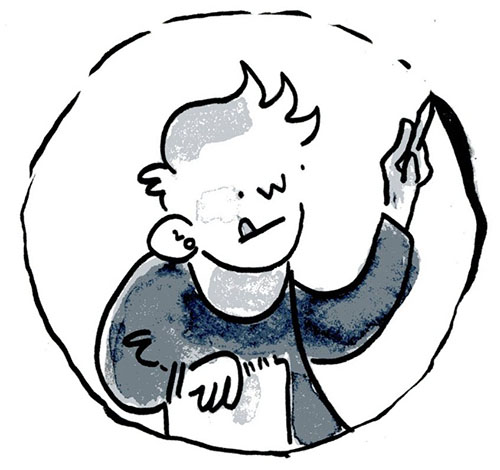
As far as bigger projects, I’m hoping to start an adaptation of Chaucer’s Parliament of Fowls in the coming year as it’s a favourite text of mine and I think it would be a real treat to draw it. There’s a moody dream guide, an imposing walled garden, the goddess of love, and birds arguing about social and sexual politics: what’s not to love?! It would be my longest adaptation to date and I hope to find a good home for it!
Interview by Andy Oliver
Visit Kristen Haas Curtis’s site here
Kristen Haas Curtis will be at Table C12a in the Comixology Hall at Thought Bubble.
Thought Bubble 2025 runs from November 1oth-16th with the convention weekend taking place on the 15th-16th. More details on the Thought Bubble site here.
Read all our Thought Bubble 2025 coverage so far in one place here.
Poster by Ng Yin Shian





